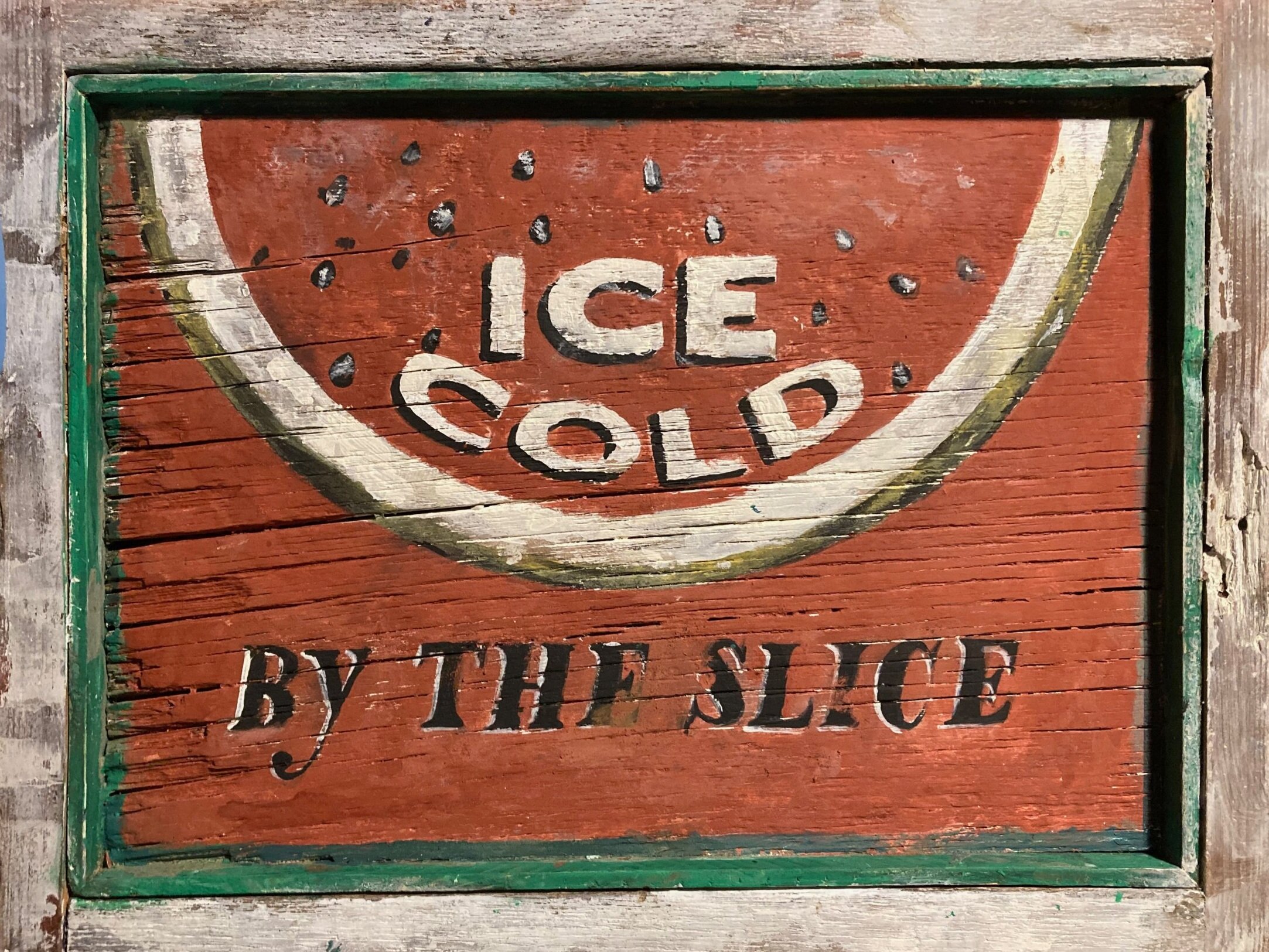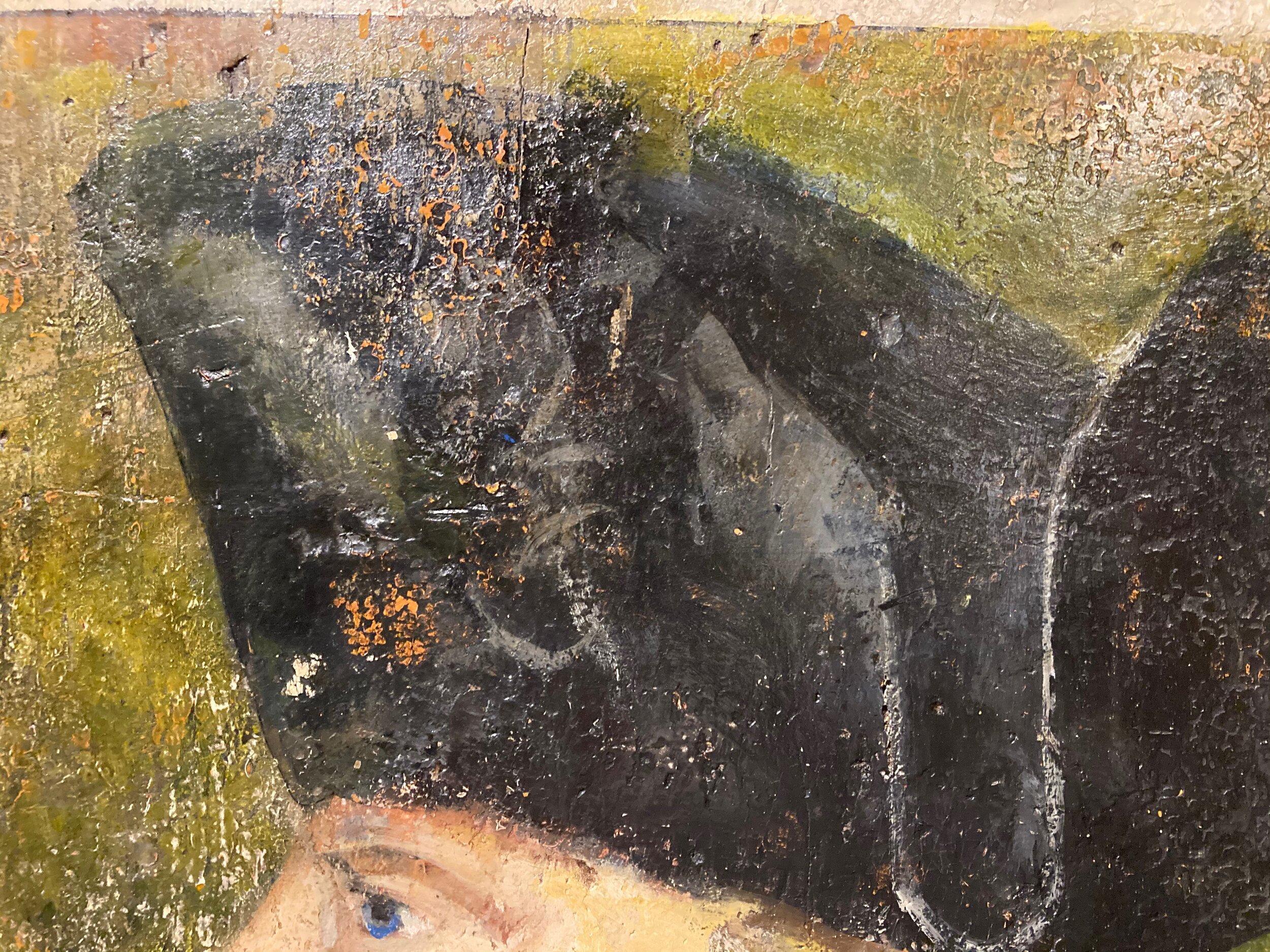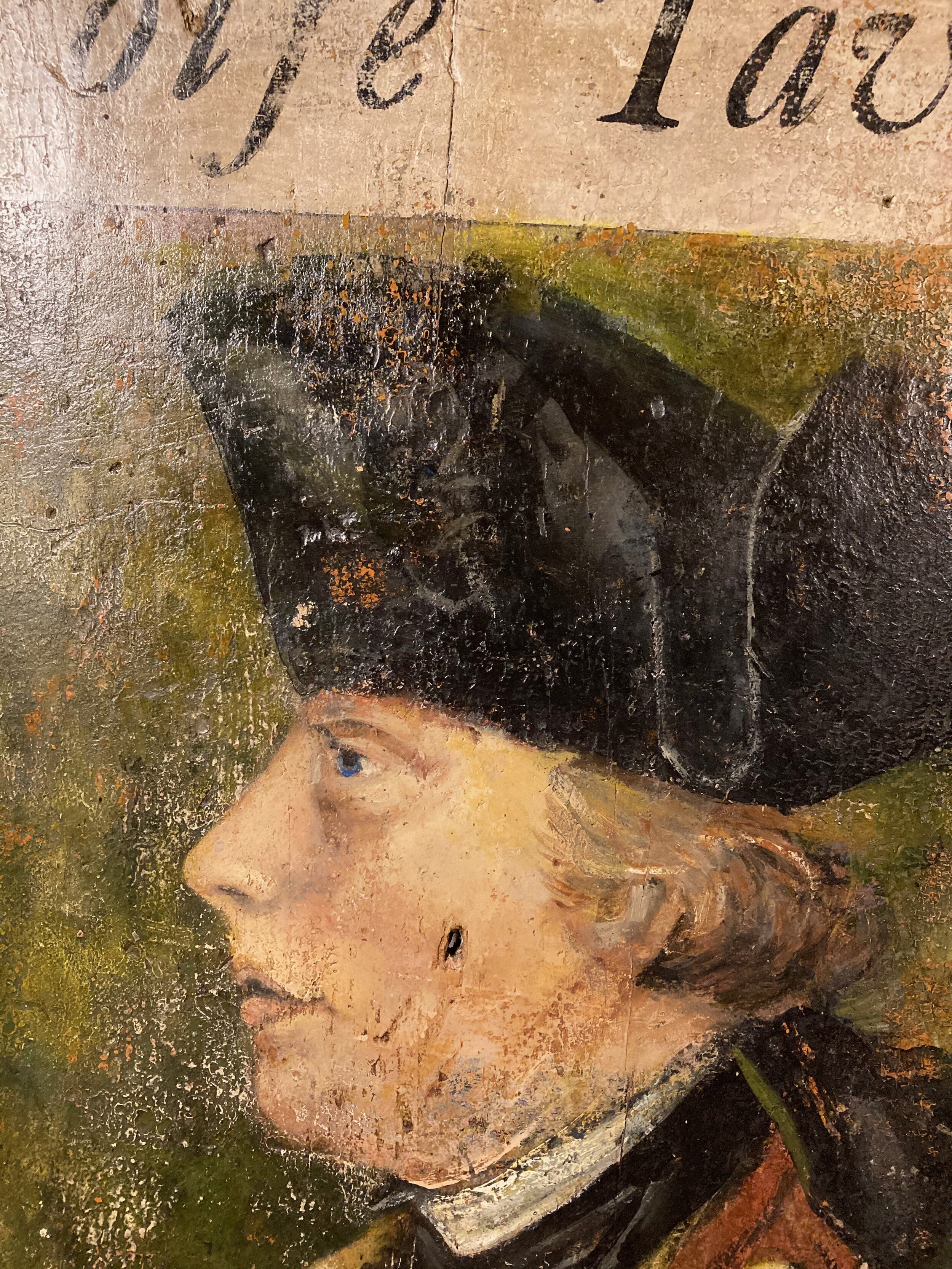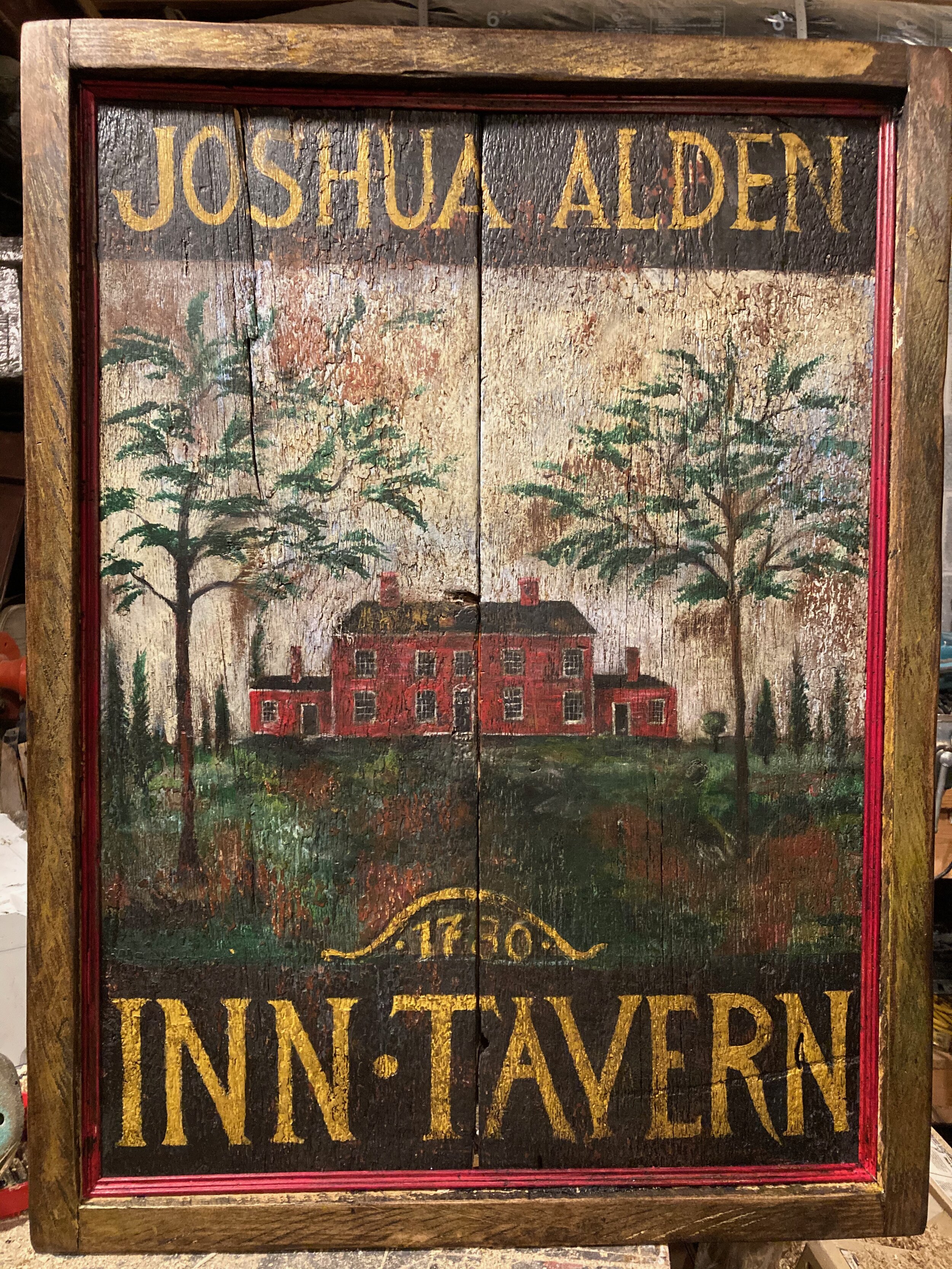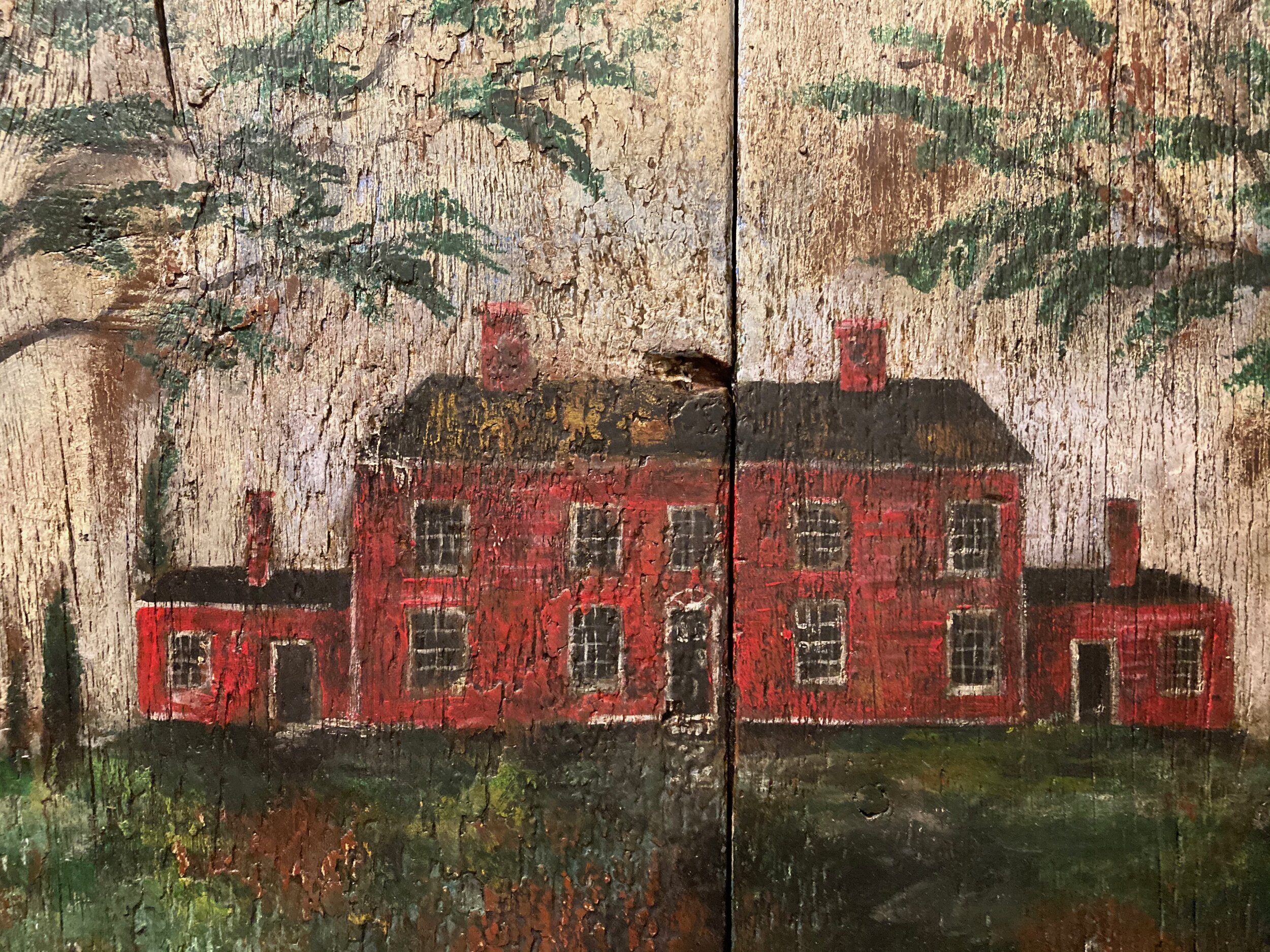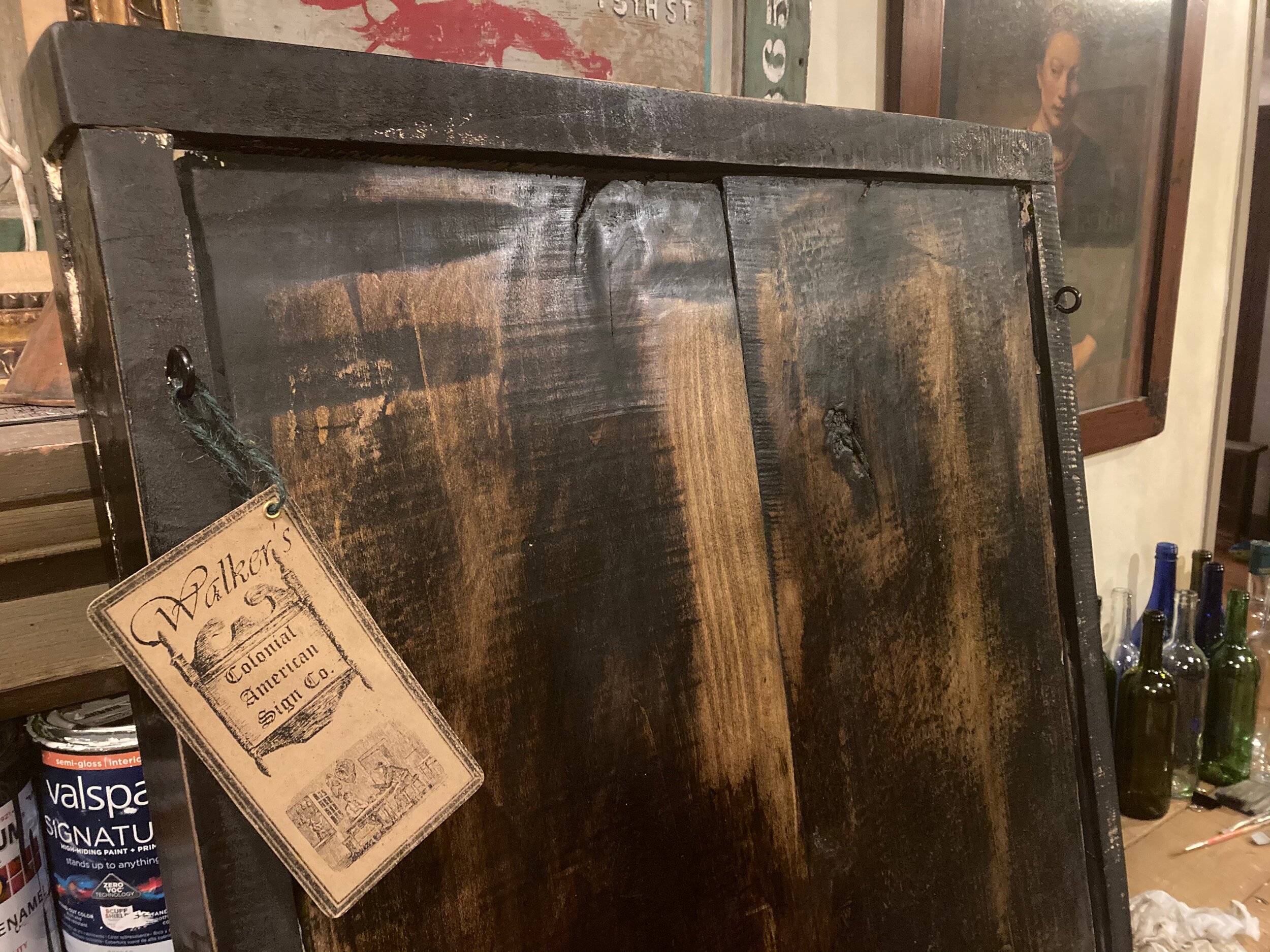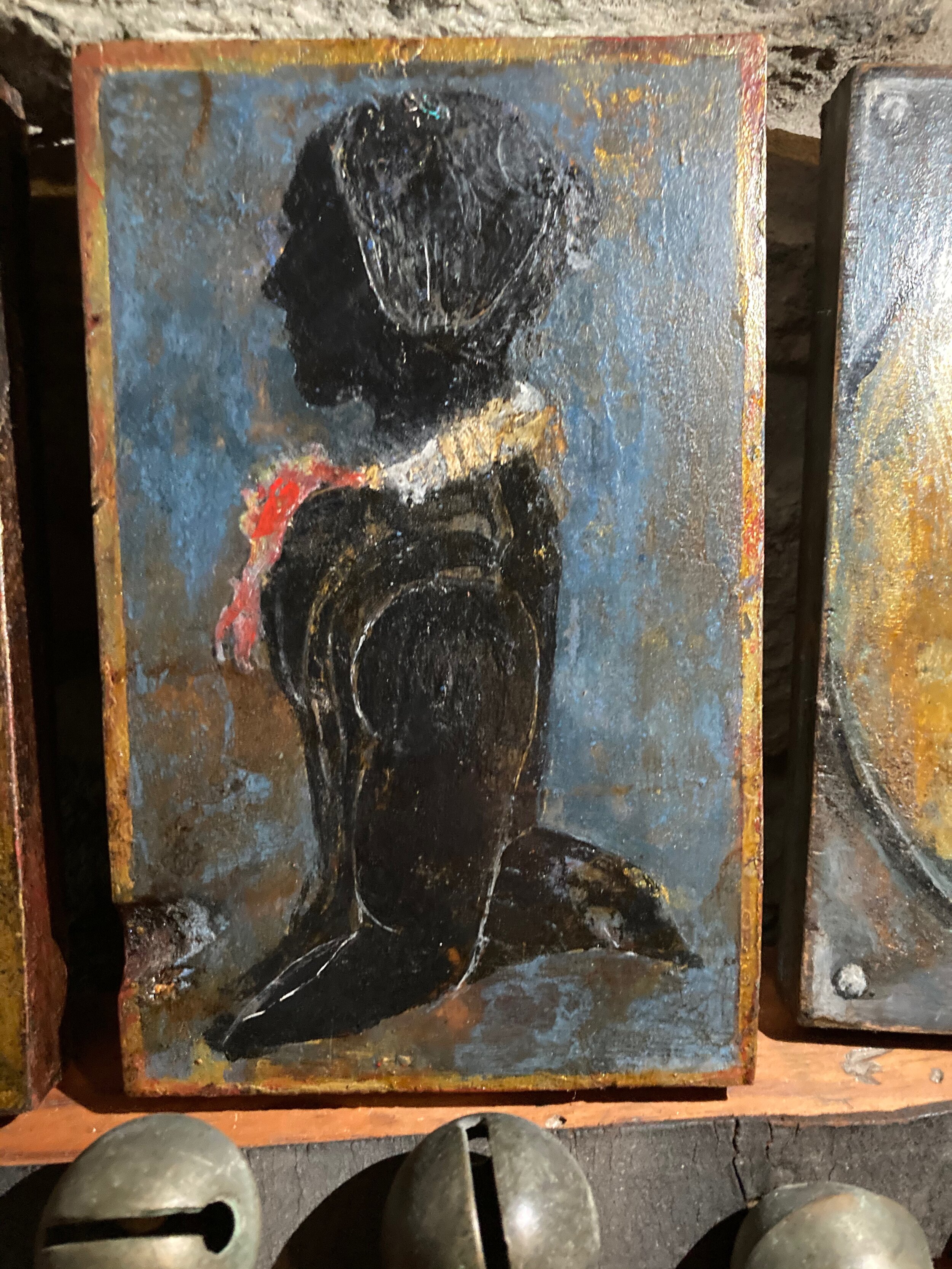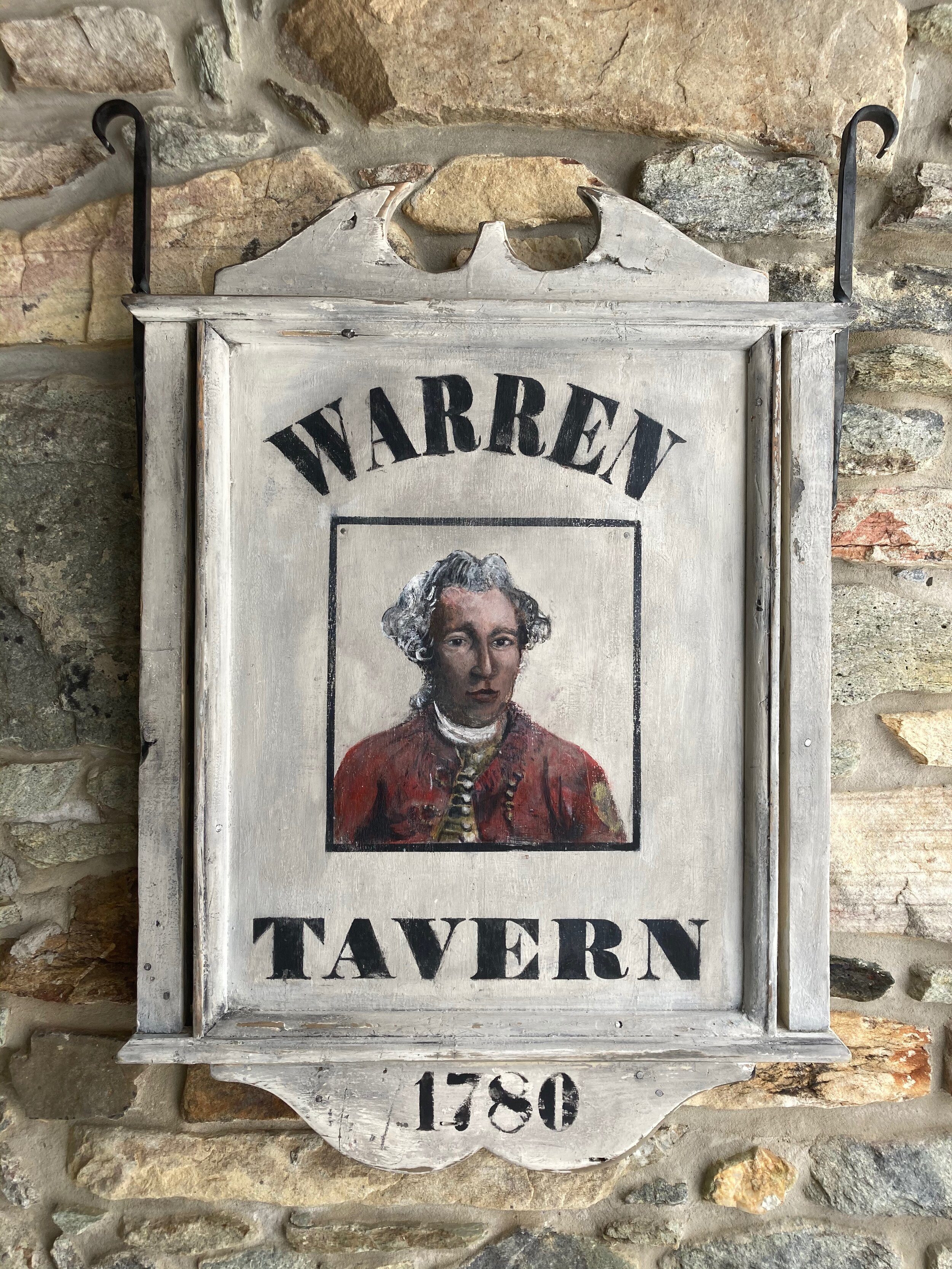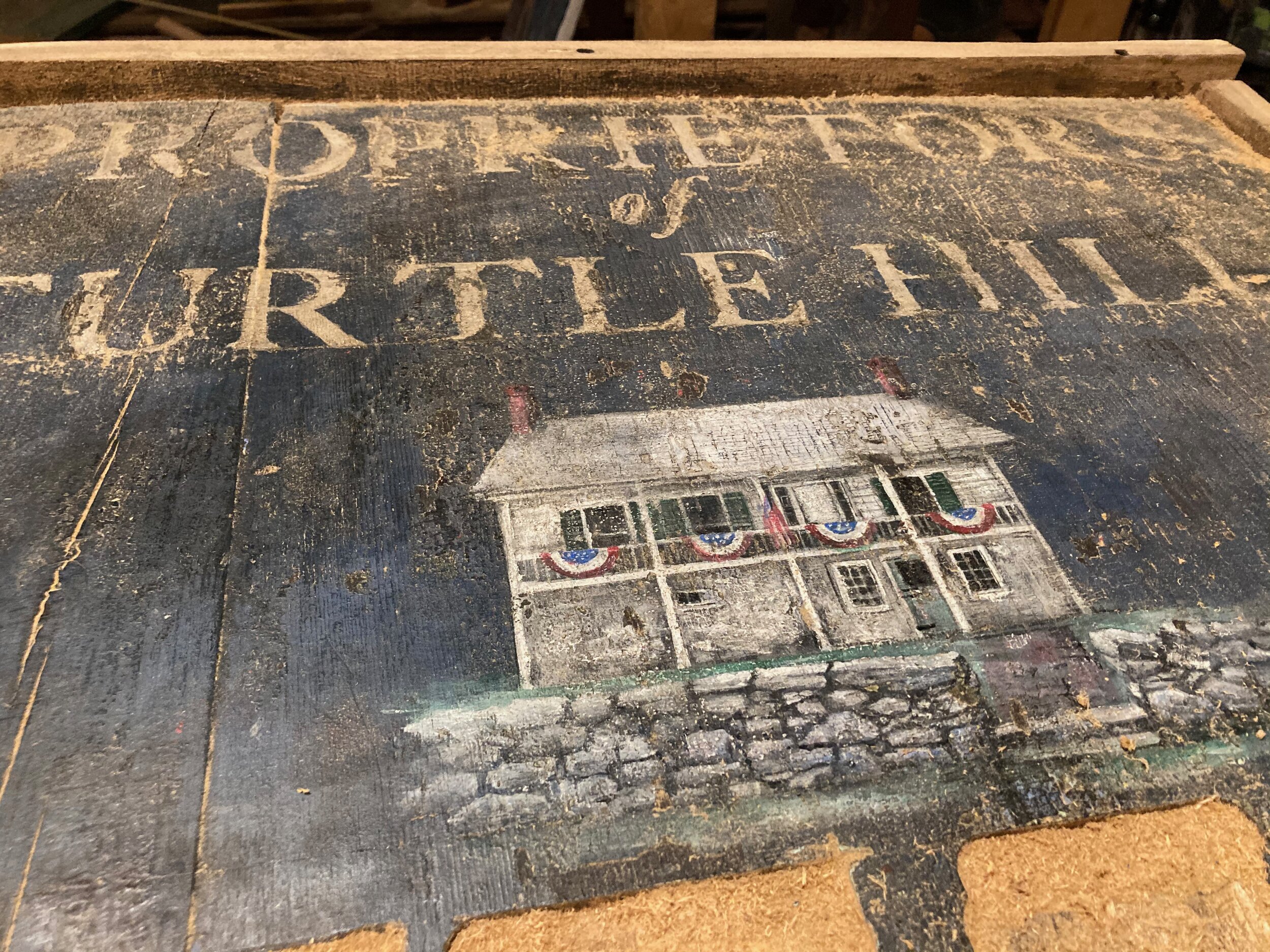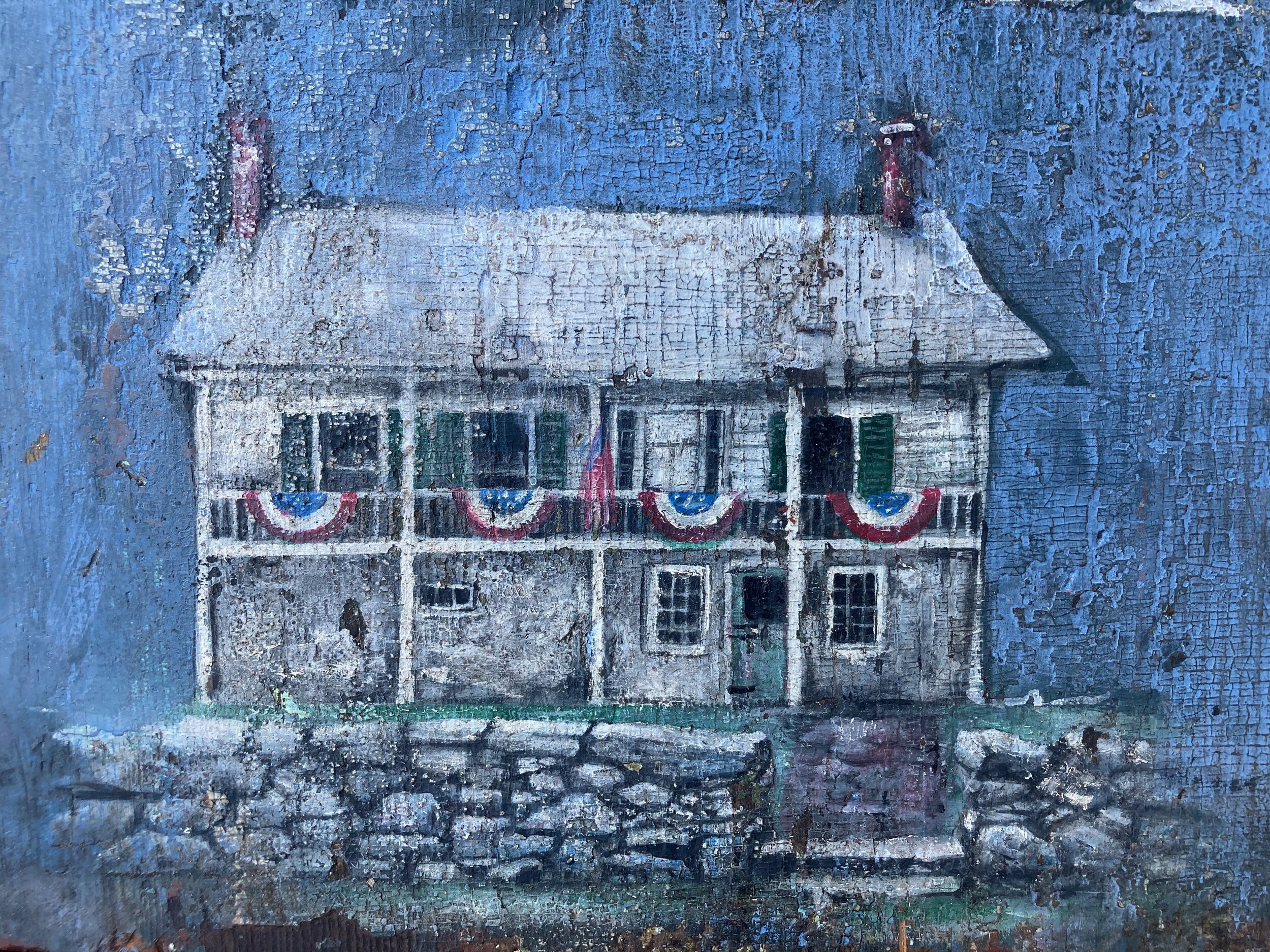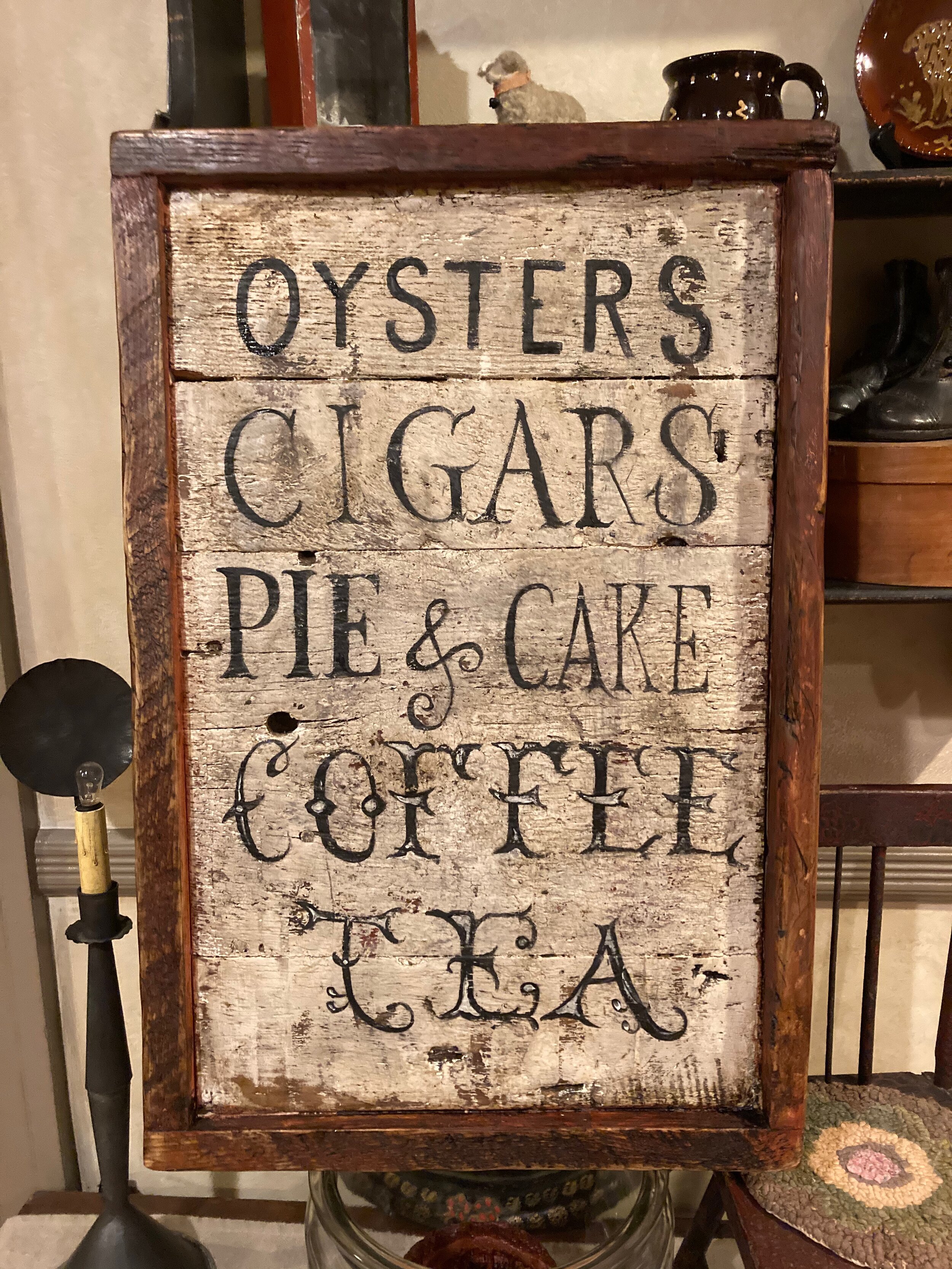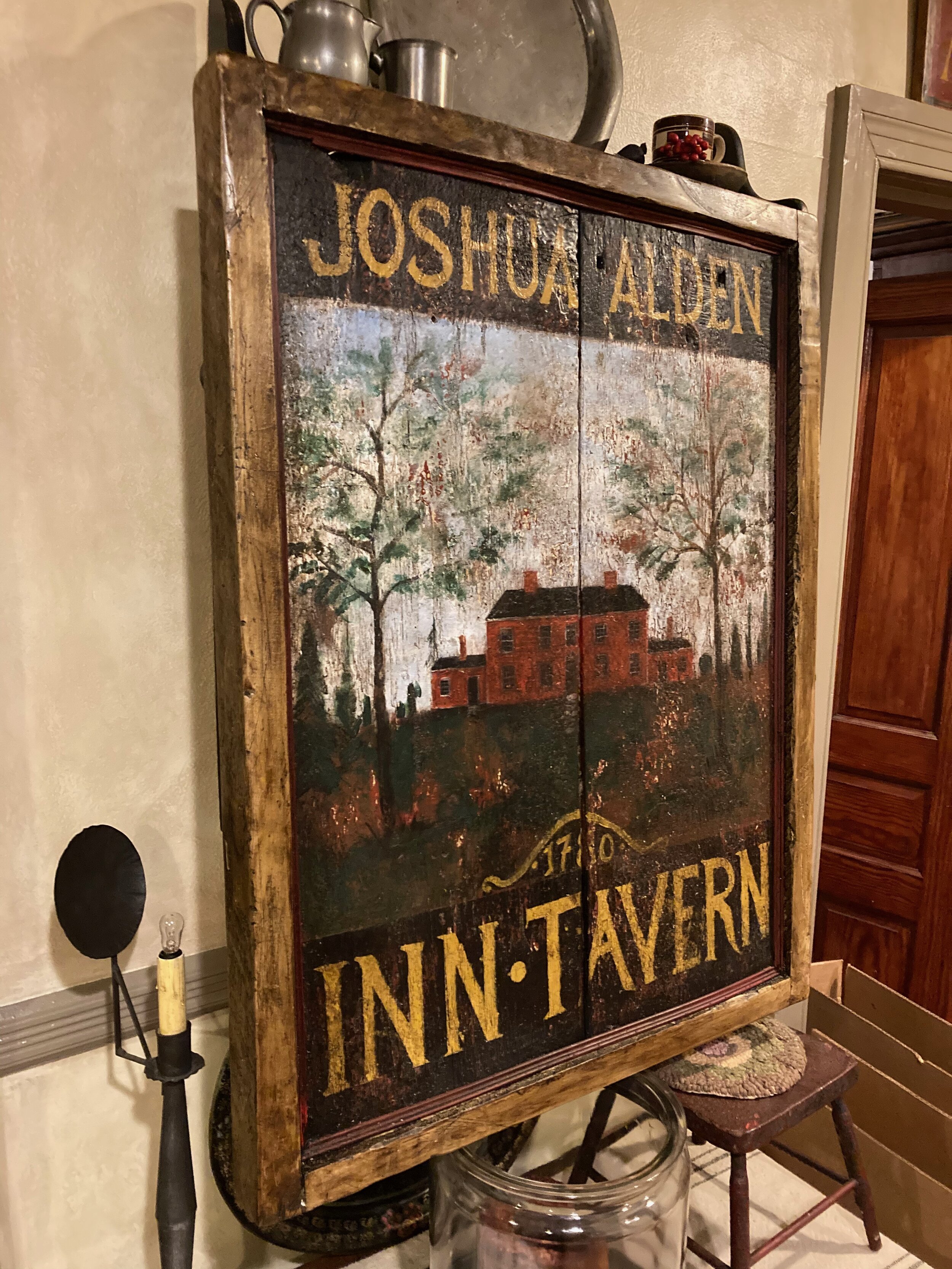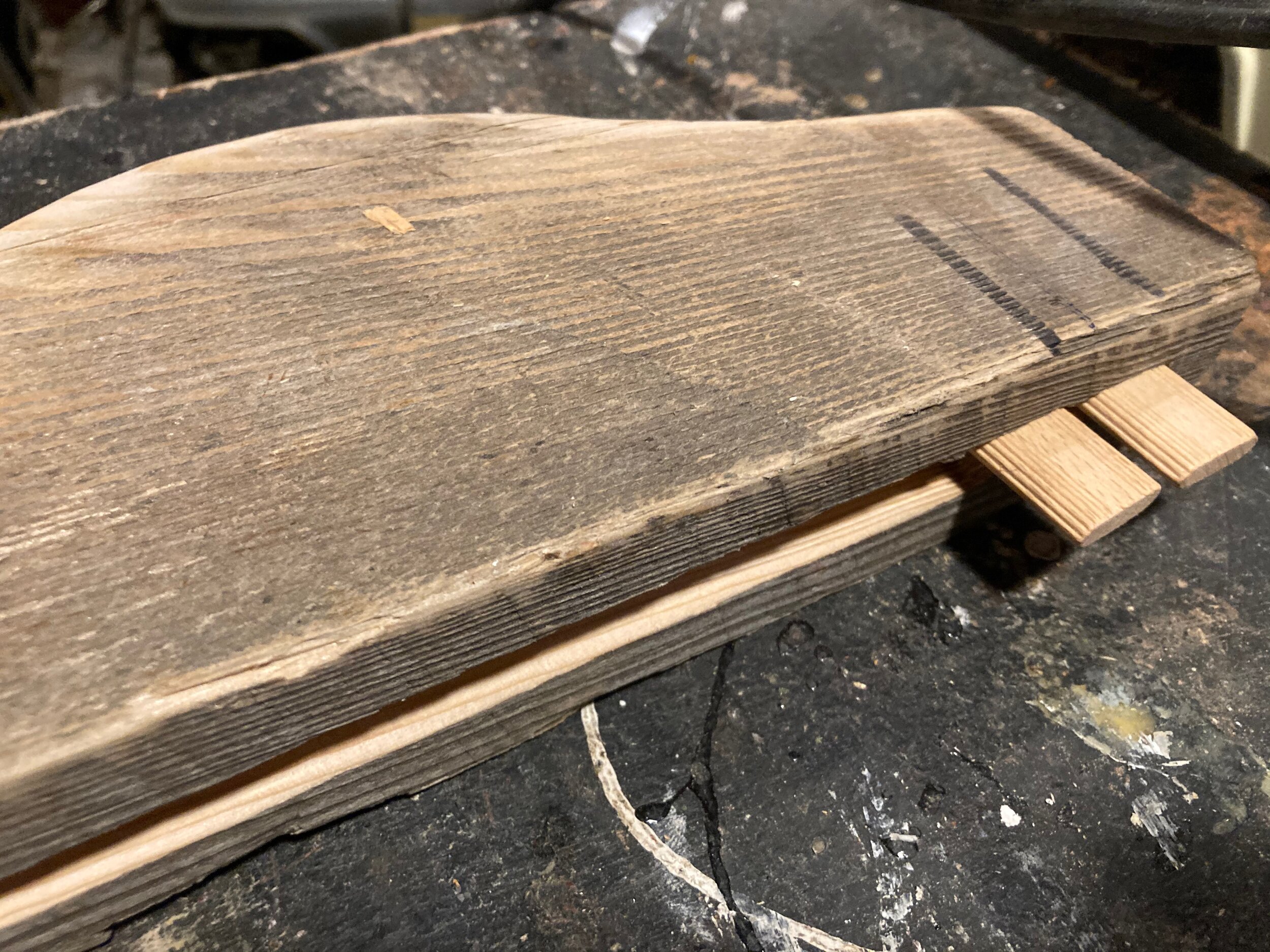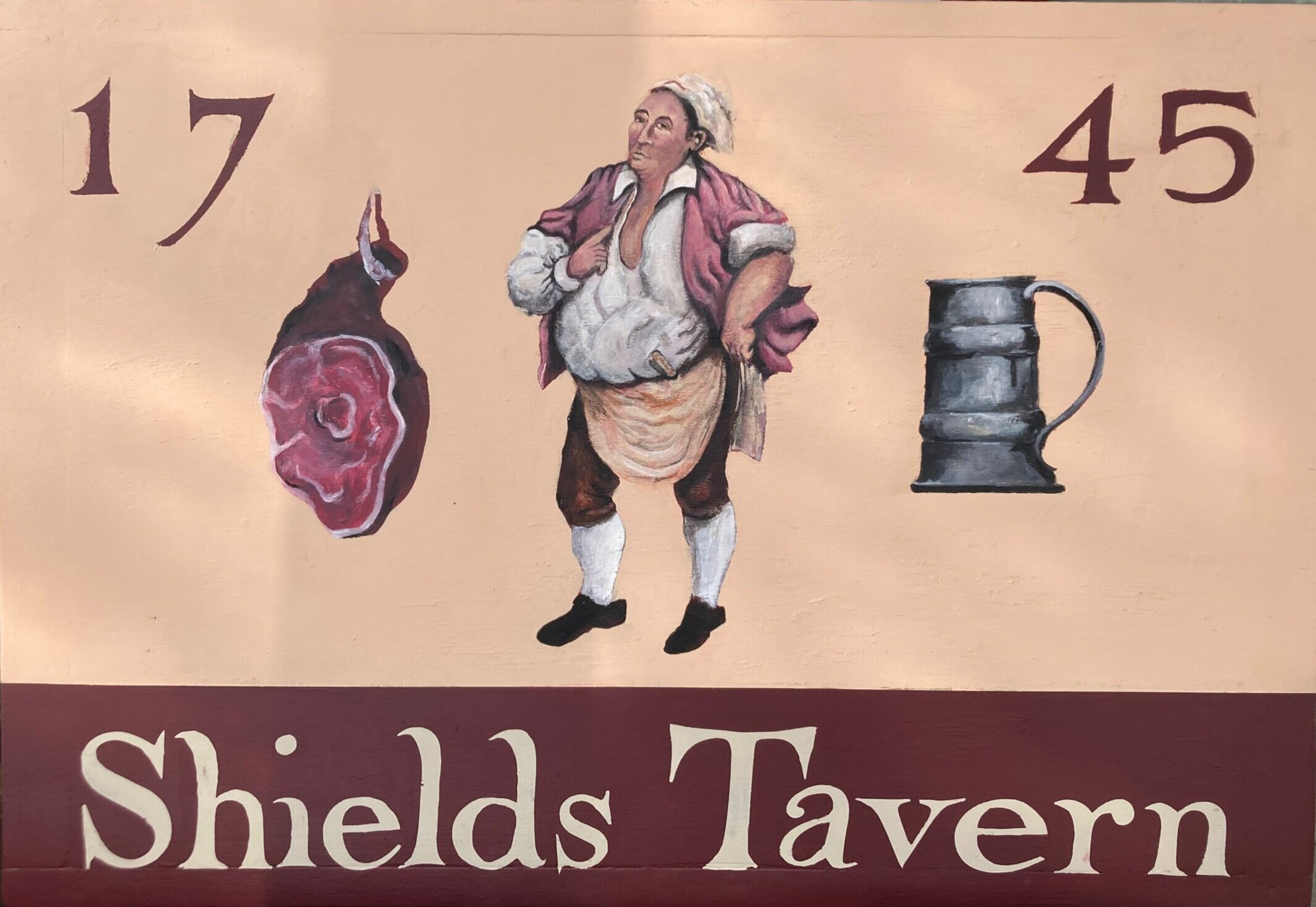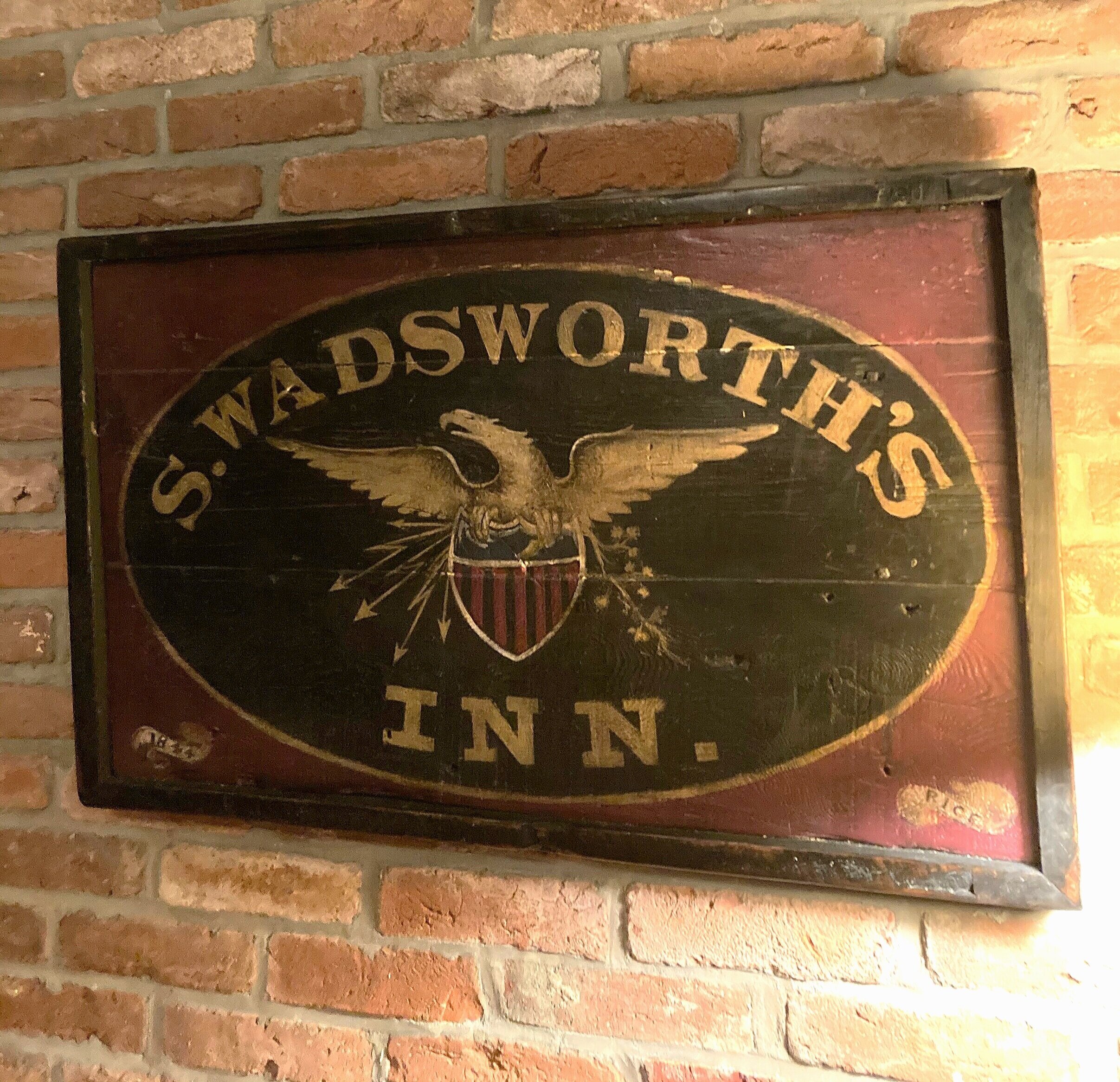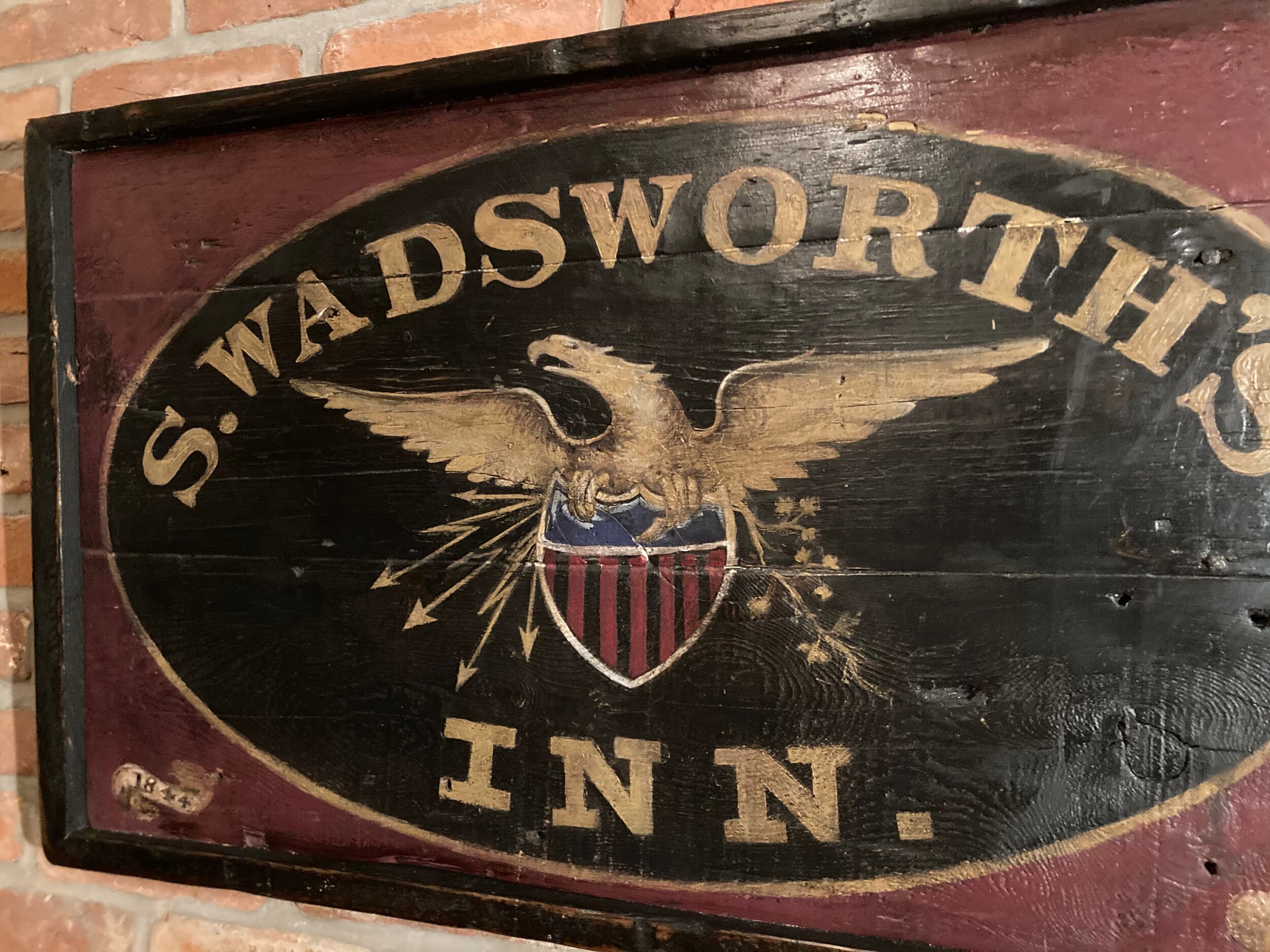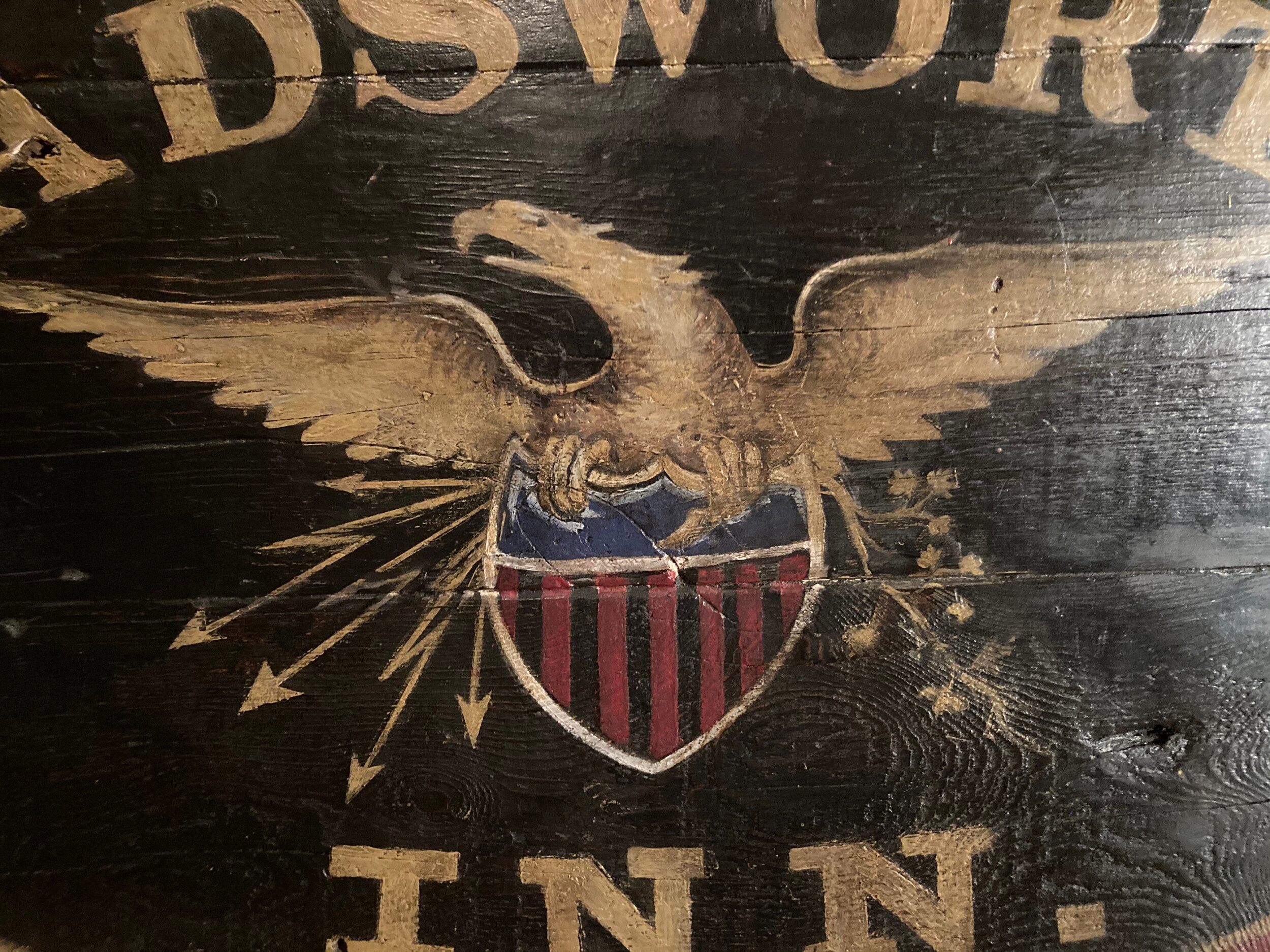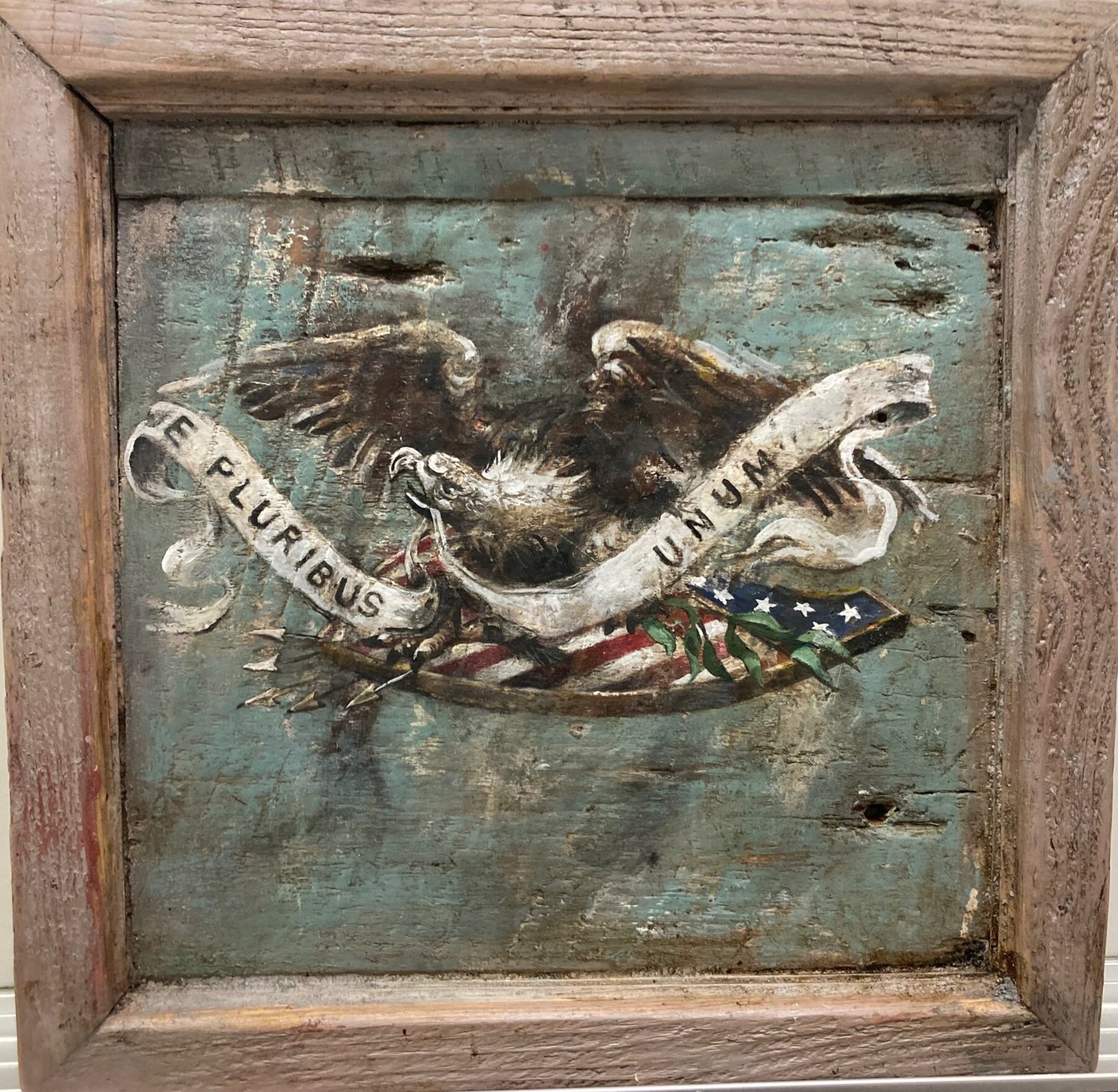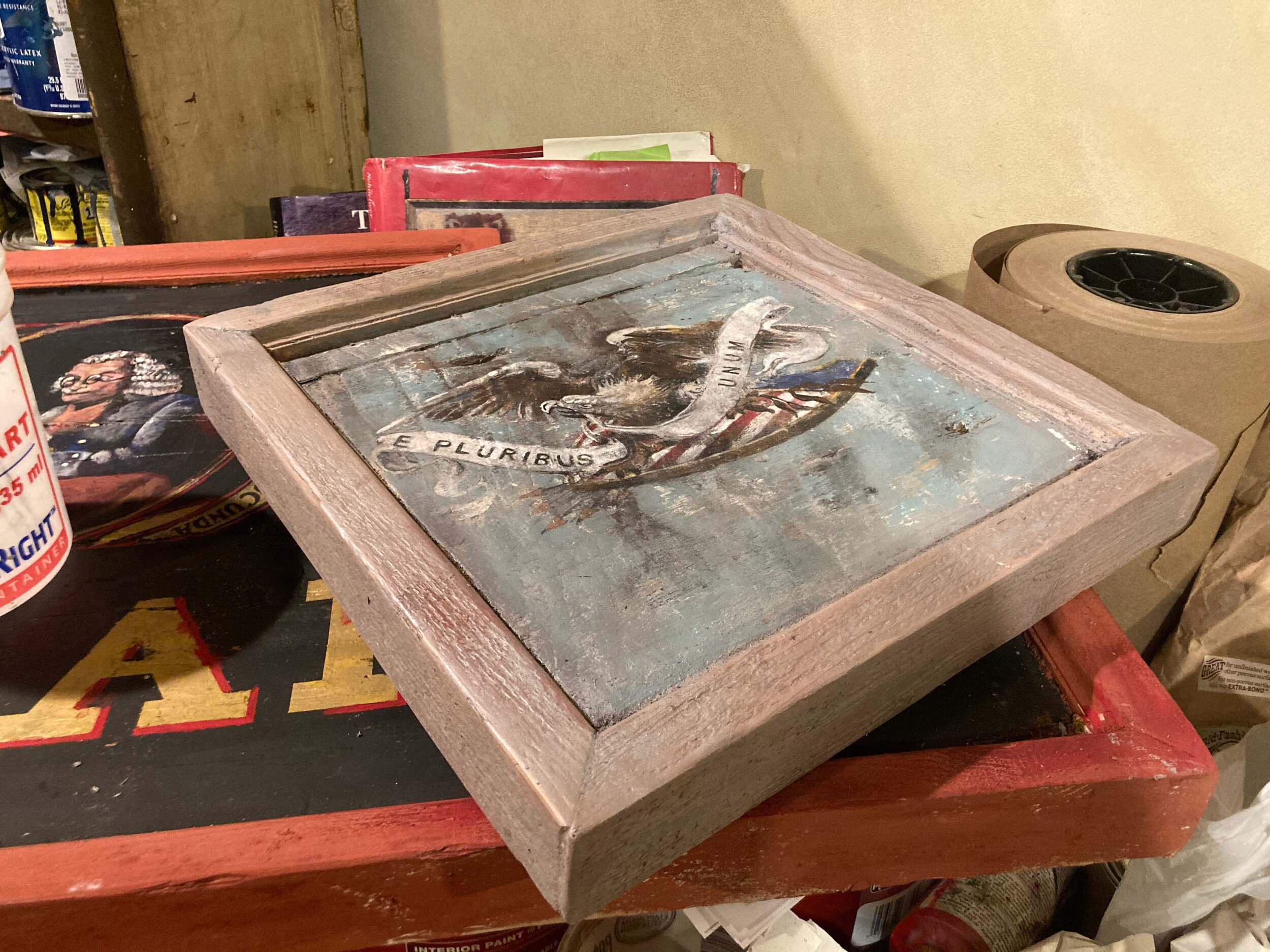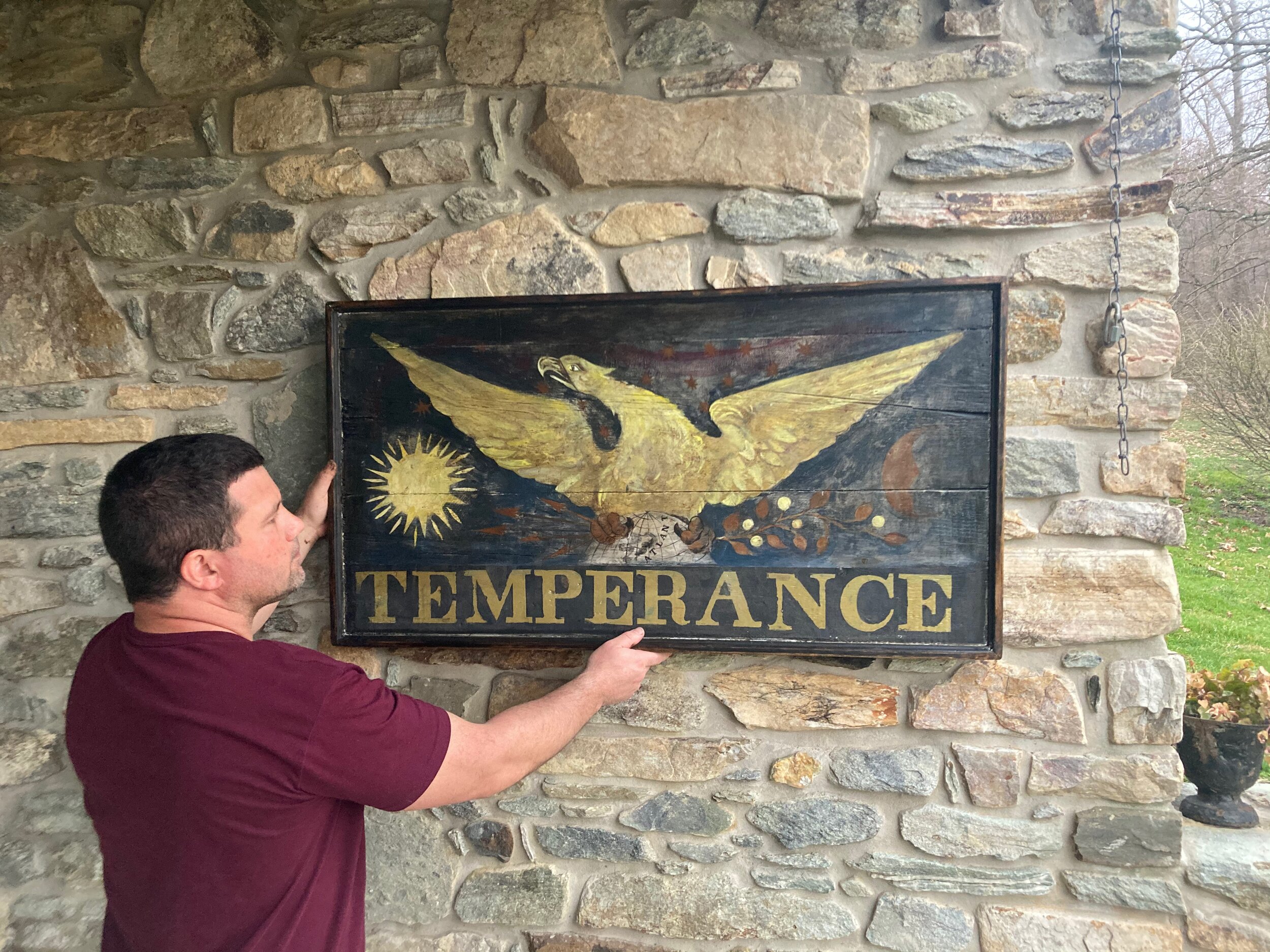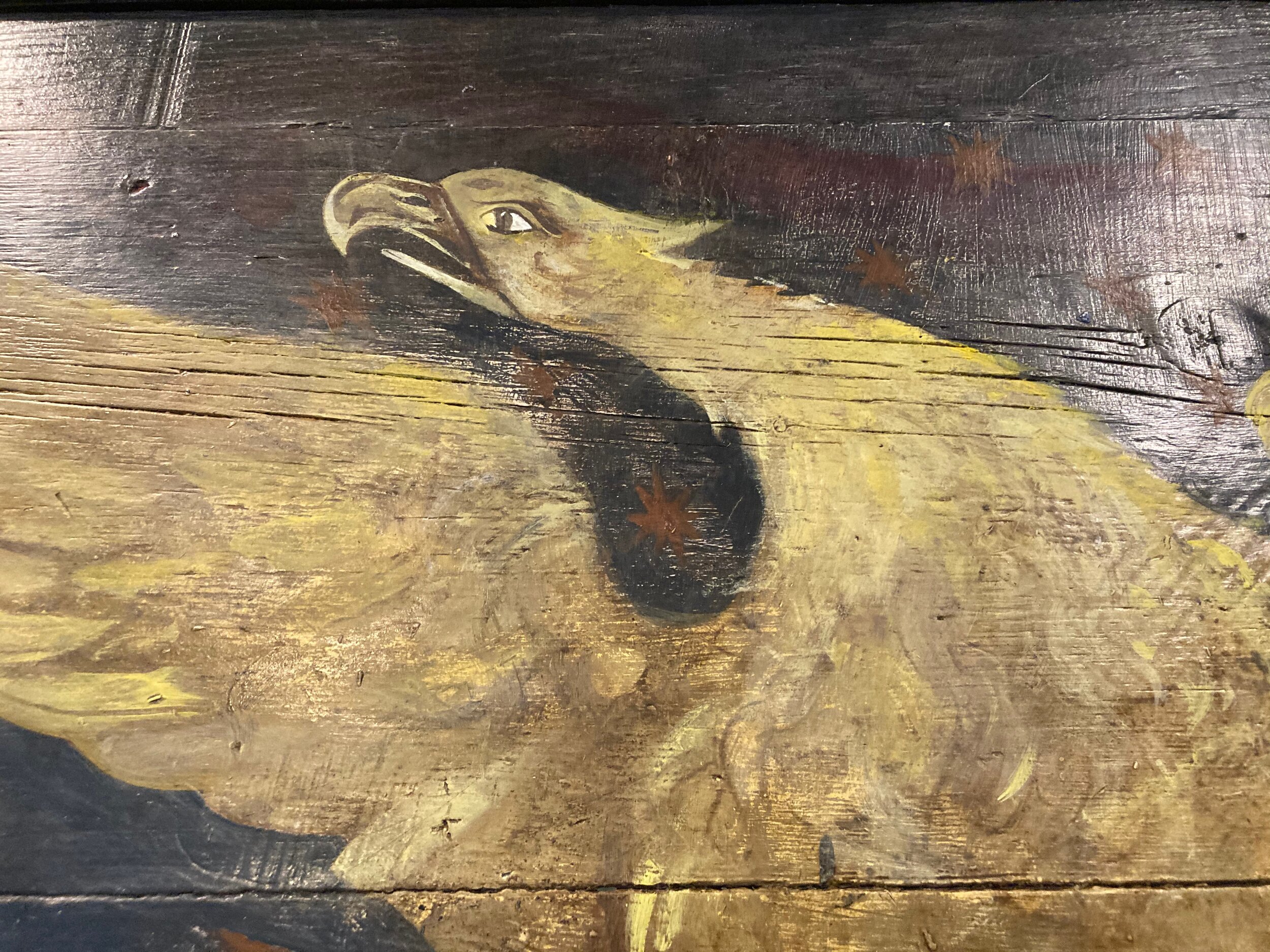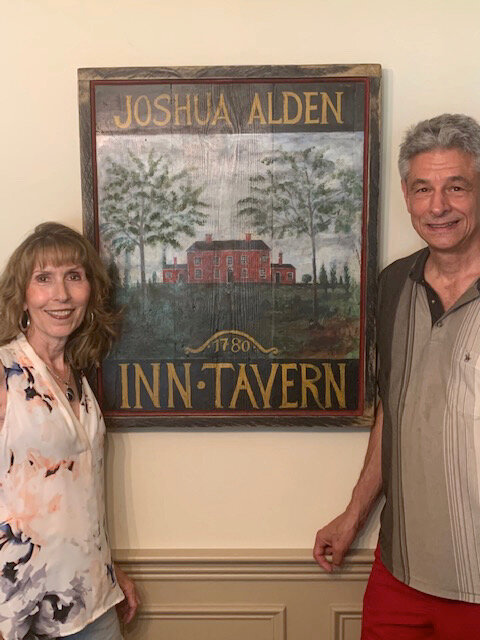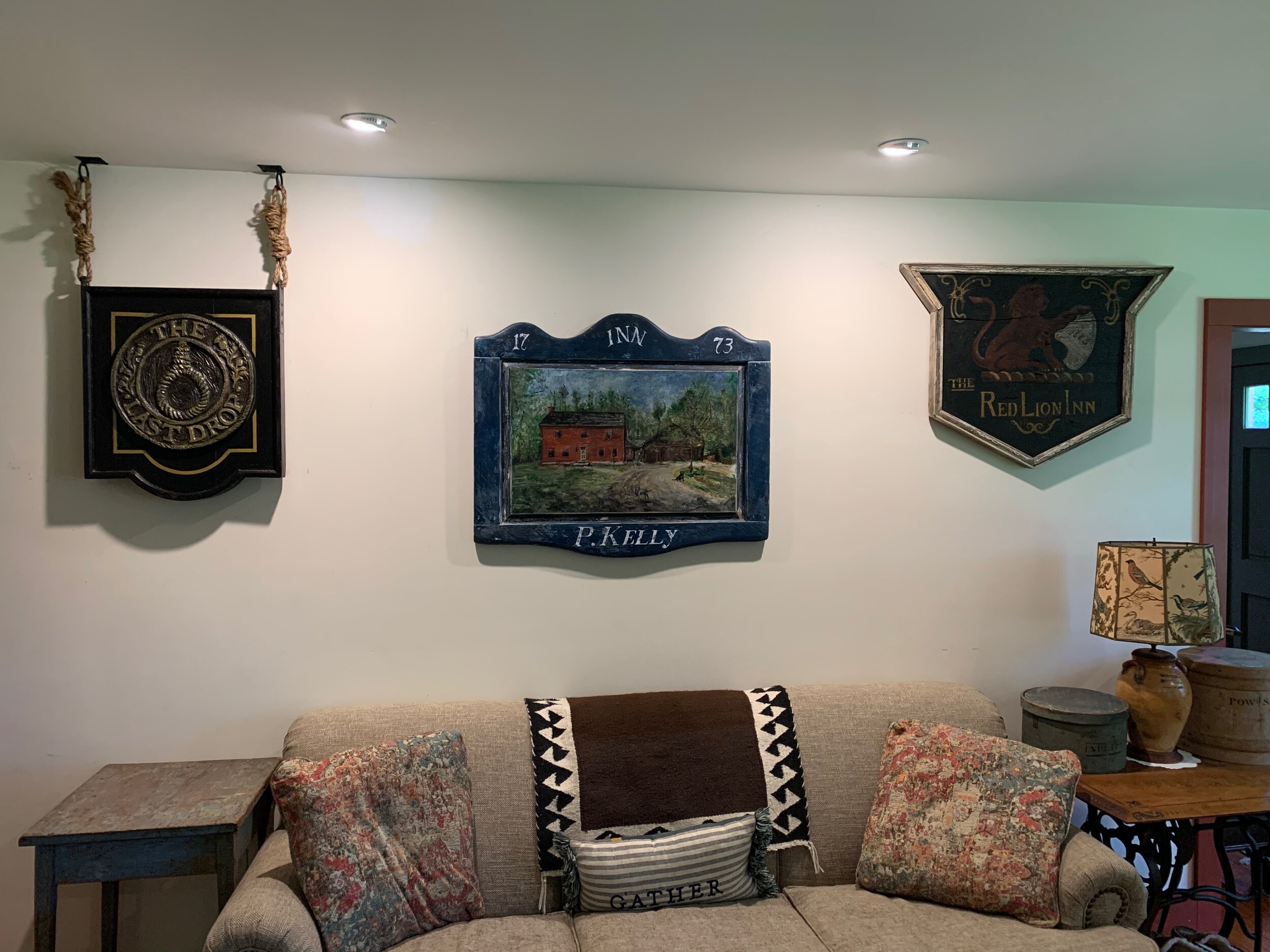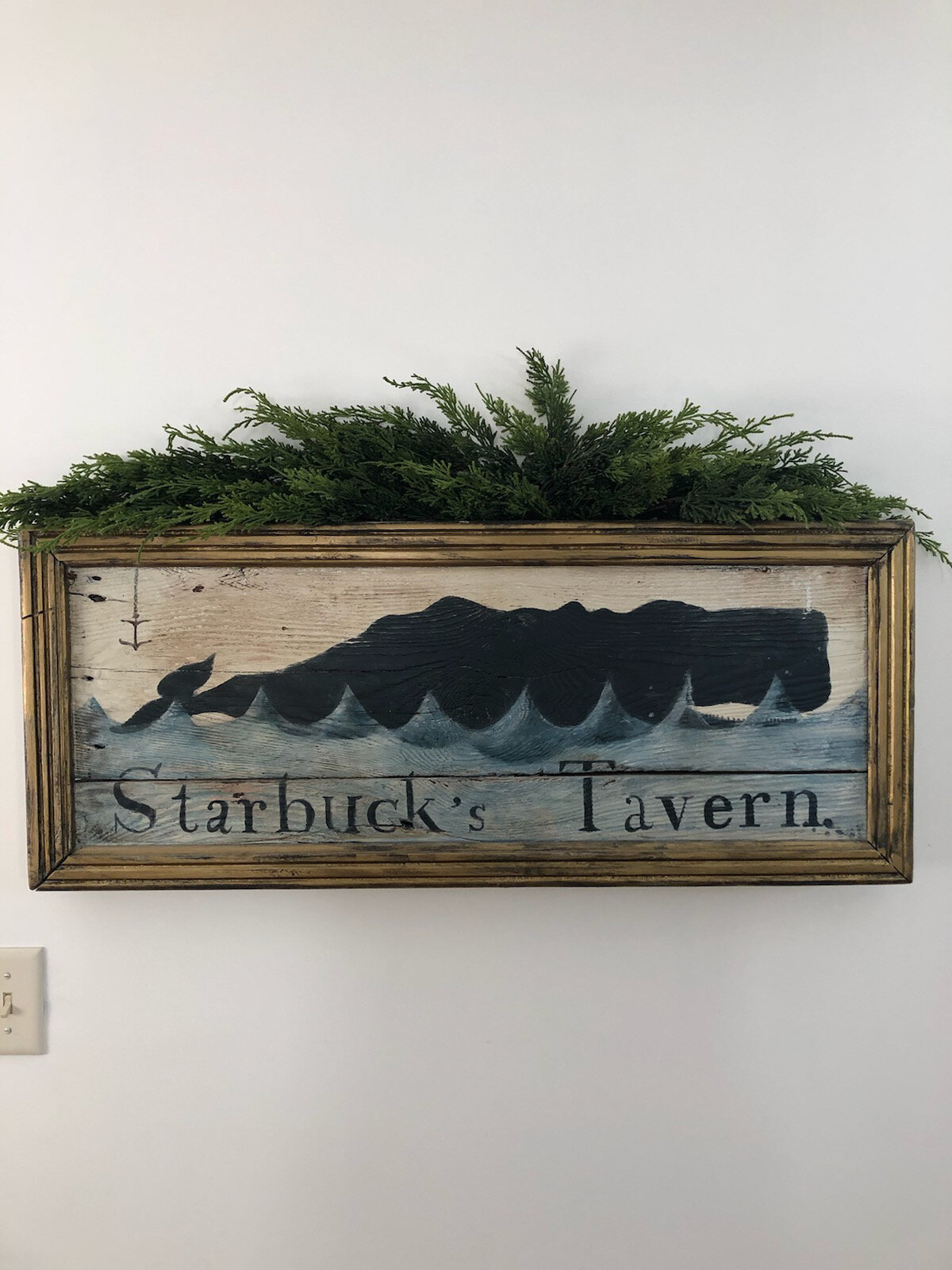1. Well, all but another year has whirled past me and I realize that I haven’t made any updates to my webpage / blog.
I’ll avoid any cliches about the challenges thrown on everyone’s lap this past year and a half, but express just how necessary it was to put an end to this past school year. I have been very busy, juggling many roles and responsibilities , whether they be school-related, home related or sign related.
2. One major happening during the past twelve months was the building of a brand-new timber frame barn.
Yes, this barn will serve as my new workshop space… the epicenter of Colonial American Sign, LLC. While this project certainly was one of the factors contributing to the hectic year, but one that issued its share of excitement for me. I plan on providing a substantial blog update about the new barn very soon (believe me - it certainly deserves its very own post), but - for now - believe me, the transition from my home basement to the new, detached space has been (and still continues to be) a very staggering process.
3. So, in the few days before we all celebrate another July 4th, I wanted to provide you with some sign pics.
My apologies for the lack of structure, but I trust that something is better than nothing (given the radio silence). Well, I suppose the tie that binds is the fact that our independence has defined our history and history is the very thing that my business seeks to honor. There is some juicy watermelon, screaming eagles and plenty of historical figures featured here… all of which smack of freedom and our independent national spirit.
4. The format of this share will feature some finished signs, accompanied by several odd in-progress pics.
In addition to some of the sign pics, I am including a random assortment of some customer-provided images that feature their commissioned signs hanging in or outside of their property. My gratitude to those who have provided me with such photographs.
Who Doesn’t Like Ice Cold Watermelon?
Here is a small sign that was made to look like it was once a part of a roadside stand; Perhaps this sign was once bolted to an old wooden fruit trailer or attached to a storefront display.
In this photo, you can see an in-progress view of the sign. After constructing the main sign substrate, I prepare it by painting and distressing it and then penciling-in the main design elements.
Another view of the watermelon sign, showing the nice thickness of the barn wood used to construct it.
Reverse side of sign, reflecting my signature and date.
Photograph of the watermelon sign hanging on the wall of the customer. What a beautiful setting for the sign?!
Washington and Woolen Mill
I’ll introduce this sign by showing you a photo it mounted above of this customer’s hearth. This was a custom commission and the request involved creating a strongly horizontal format sign that incorporated George Washington’s portrait within the title “Woolen Mill”. I used various milk paints to achieve a rustic look here, but the magic resulted from the fortunate availability of two old wooden planks of a most interesting character. Each were found with a unique shape and, with a little bit of shuffling, I realized that combining them would result in a most pleasing sign shape.
Up-close view of the two planks that were eventually jointer together to form a most unique signboard shape.
I especially like how the raw wood patina compliments the painted surfaces in this sign. But, why does George appear to be scowling at us from this angle? :)
Detail of George Washington’s face, the central motif of the sign.
Detail of the milk paint layers used to craft George Washington’s facial features.
A Tavern in Honor of a British General
General James Wolfe was a British officer renowned for his military reforms and especially for his major victory over the French (1759) in Quebec. Just before his death, Wolfe learned of the French defeat and, knowing that the French capital in North America had fallen, he uttered the famous words “Then I die happy”.
Here we have a custom sign that aimed to reflect the historical legacy of the man we call General Wolfe. This sign was commissioned as a gift that would be given to the customer’s mother as a surprise. Again, various layers of milk paint were added, removed and then added again in effort to create an image that reflected something carried over the course of several generations.
Here is a detailed view of the Wolfe Tavern sign that gives you a sense of the paint layers and deeply aged surface patina that is one of my specialties. If the average viewer only knew how much time and energy goes into every square inch of my signs, they would certainly be surprised. In an age where many of us scrub and buff our surrounding surfaces to maintain their freshness and blemish-free sheen, it does seem counterintuitive to expend such elbow grease to make something look old and weather, doesn’t it? Well, such is the nature of creating reproduction signs - new items that appear as though they had existed for centuries. It’s a rather fun process, regardless of the toil.
Check out those under layers showing through. The fact that the board used to paint this sign was found with some rather lovely craquelure increased the visual dynamic.
Okay, I couldn’t help it… I tossed in a few extra detailed view of General Wolfe (below) for your viewing pleasure.
Joshua Alden Inn and Tavern
The Joshua Alden Inn & Tavern sign is always a popular request and never seems to disappoint.
Here is a close-up of the Joshua Alden inn / tavern, a lovely symmetrically designed house with the most spectacular colonial red coloration. The old barn wood used for this sign certainly adds to the visual character, making it a rather convincing historically authentic object to those viewing it.
Inn at Popponesset
I have painted two of these signs in the past several months. An homage to the brave sailors who worked the New England waters hundreds of years ago, such signs serve to highlight the importance of maritime trade, warcraft, exploration and transportation. An extension of the ship prow, this maiden safely guides and protects it.
Popponesset is located in Mashpee, Massachusetts; Today, Folks traveling through Cape Cod still consider it one of the most charming locations to visit.
Detail of the Inn at Popponesset sign.
Here is a detail showing the lettering done in gold leaf.
In this image, you can see that the lettering here was fashioned in paint (as opposed to gold leaf); Each technique offers its own visual aesthetic.
A photograph of the reverse side of one of the Inn at Popponesset signs; As I mentioned previously, the reverse sides of my signs are treated well. It varies as to the exact treatment - depending on the sign. However, I make it a point to bring the back side of any commissioned sign to a degree of finish. Even though the backside of most signs will face the wall, I’m compelled to give it its due attention.
Here we see one of the fine maidens hanging in the home of the customer. In addition, the mermaid sign on the far wall happens to feature an older sign I made several years ago. It thrills me to know that my customers take such pride in showcasing my work! I mean - Just check out those lights that are dedicated to my signs! Some peoples’ “display game” is simply that good!
Montpelier Farm
Here is a charming outdoor sign that I thought I’d share. Simple yet effective. Sometimes the most fundamental elements result in the most effective communication.
An up-close pic of the sign. While I do not personally hang / mount any of the signs I paint, I do offer my advice in terms of possible options. Sometimes, my customers already know how they are going to mount an exterior sign (such as in this case). The dimensional constraints are therefore communicated to me and considered in the design process.
A special gift for mom
Now here is a piece I made for my mom. I gave it to her at Christmas (2020) and she was thrilled to showcase it for me. This is not necessarily a sign per se, but a folk / primitive style painting on wood. While this was given as a gift to my mom, it was originally used as an image that was professionally scanned and printed onto cabinet grade plywood en mass. The prints, which look pretty darn close to the original painting, were commissioned for a time-share company and incorporated into the historical interior design scheme of living spaces. I have a few of these left, so email me if you have any interest. The original, of course, is out of the question… you’d have to pry it from my mother’s hands!
Colonial silhouettes
Here are some miniature silhouette paintings that I made for Christmas gifts. A few of them made their way to a customer or so, as a token of my appreciation for their patience :) <<< As I said, this year has been exceptionally busy.
And yes - that is a silhouette of a dog! This was a gift to my sister-in-law, whose little dog Lillie has been forever immortalized in this original, hand-painted silhouette :)
Join or Die
Never unpopular, the Join or Die image continues to be a crowd favorite. The wood used in this version was exceptional - hardwood with excellent surface character. A good surface makes my job of painting much easier. I also like how the rough cut edge of the exterior molding echoes the scaly texture of the snake.
Warren Tavern
This was a commission from the owner of the Warren Tavern, located in Charlestown Massachusetts. Check out the historical roots of this establishment (below).
From The Massachusetts Society (Sons of the American Revolution):
https://www.massar.org/bostons-historic-taverns/
Warren Tavern is the oldest tavern in Massachusetts and the most famous watering hole in the United States still in its original building and location. First erected in 1780, the Warren Tavern was the first building to be rebuilt in Charlestown after the British burned the whole area during the Battle of Bunker Hill in June of 1775.
Warren Tavern is one of the most historic Boston bars, even down to the low beams in the ceilings, which the builders salvaged from old boats at nearby Charlestown Navy Yard – making the beams even older than the rest of the Tavern. Inside, the large fireplace steps you back into time.
The Tavern was built by Captain Eliphelet Newell, who fought at Bunker Hill and had been a close friend of Sons of Liberty leader and fervent Patriot, Captain Newell named his tavern after his friend Dr. Joseph Warren, who was killed on the hill by the British. Paul Revere, who frequently who frequently met there with other patriots, remarked that it was one of his favorite watering holes. General George Washington stopped by for "refreshments" while visiting a friend in Charlestown
It was an honor to have fulfilled this commission, creating a sign that honored America’s historical roots. The fact that this sign - today - hangs in one of America’s oldest taverns is flabbergasting and thrills me to no end.
Here is a nice three-quarter view of the sign. The beautiful wrought iron that I incorporated into this sign was made by a local blacksmith.
One more image of this sign, this time a black and white version. Here, you can see the visual effectiveness that comes from high contrast. The light and dark values work well together, generating a powerful image that reads well from a great distance.
Honoring those who called Turtle Hill their home
Okay, this was a rather interesting commission. The request was to construct an object that featured the title of the historical estate / property (Turtle Hill) and an image of the building. In addition, this piece should provide space for honoring the previous property owners through the years and possess an ability to recognize any future owners. Each of the plaques contain the family name, years of ownership and a small image that reflects something about either their profession or area of interest.
The notion of creating individual plaques was suggested by the customer, but the means through which the design would address this was up to me. Therefore, after much consideration and trial-and-error, I arrived at the solution. This involved embedding magnets into both the main substrate and the individual plaques. This method provided both security and portability of the parts involved. The main substrate was made using the most exceptional piece of old wood. This thing had the most appealing paint texture / craquelure! The small plaques were made using thin, oak stock. The construction process involved a great deal of sweat equity, especially in the area of hand-carving. Each of the rectangular areas in which the plaques nest had to be carved away.
I do have a video or two that showcases how the magnetic capture works. This might be a good idea for a future blog post :) is that any future owner of this estate can send to me the blank plaque/s to add to the documentation.
Here is a picture of the Turtle Hill property; The sign hanging out front was an earlier commission.
The individual plaques featuring the proprietors’ names, time of ownership and image reflective of them.
New England Menu Board
Here is a menu board that I made recently. The wood used for this sign was quite suitable to work with.
Another Joshua Alden
Molding detail of the Joshua Alden Inn & Tavern sign.
Another molding detail of the Joshua Alden Inn & Tavern sign.
Montrose House, Harrisburg PA
Interestingly, a previous sign exists beneath; I initially painted this small sign for a customer who moved. This current version reflects the new residence :)
Another pic of the Montrose House - Harrisburg, PA
E Pluribus Unum
This Latin text translates to “Out of many, one”. We see it on currency, flags, old documents, etc. but how many of us know what it means? Here, the popular phrase is coupled with another symbol we see in our great nation, the eagle. Here, the symbol of America is perched atop a globe, wings spread and ever watchful. This was a custom sign that was made using thick hemlock wood that was left-over from my timber frame barn construction.
Here are a few pictures of the process at various stages of construction.
The framework consists of rails (horizontal pieces) and stiles (vertical pieces) that are connected to one another. This framework holds the main raised panel in place. Here, you can see that my method of joinery is by means of tenons (Festool Domino, to be exact). These pieces of Beechwood are glued into place and strengthen the joint.
Because wood expands and contracts, it is essential that the framework surrounding a raised panel be made in a manner that allows for this. If the central panel was fit snugly into the framework will little to no wiggle room, the swelling that occurs in the summer months would most likely cause damage.
Williamsburg Taverns
Below are a pair of tavern signs that are based on those still in operation in Colonial Williamsburg, VA. Both the Christiana Campbell’s Tavern and Shield’s Tavern are popular destinations for those wishing to experience early tavern life in our present day.
Here is a reproduction of the Shields Tavern sign, a staple of Colonial Williamsburg Virginia. As was common in early America, the advertisement of one’s goods or services had to be simple and clearly read. This sign tells us that, inside this establishment, we will find quality meats and cold libations.
Support your local library
Do young folks still use libraries? Do older folks still use libraries? Well, we certainly are in the thick of the digital age where everything any anything can be found at the touch of our fingertips. That said, the so-called ‘black mirror’ didn’t exist hundreds of years ago and the pursuit of knowledge outside of the classroom took place by means of visiting a building that housed stacks and stacks of books. While I personally don’t miss the rigors that accompanied using the card catalogue system, I do recall fondly the experience that visiting a library provided me. Don’t lie, one of the your highlights most certainly was the smell of old books! Am I right?
Over the course of the year, I made quite a few versions of this sign. In fact, one of them represents my first official overseas commission. A fellow living in Ghent (Brussels) commissioned a version for his own personal library. I’m a bit jealous that one of my signs made it to Europe before I had the chance to myself, yet I’m honored to have made a connection to the European market.
Check out this display! This customer said that he had just the spot prepared for my sign. Once he sent this photo to me, I knew exactly what he meant.
Wadsworth’s Inn and the fighting eagle
This was my first time painting this particular sign. The original hails from the Connecticut Historical Society (Hartford, Connecticut). You can visit their website and actually take a virtual tour of their exquisite sign collection here https://chs.org/online-exhibition/virtual-tour-inn-tavern-signs-of-connecticut/
Lake Placid - A long lost old resort sign
There aren’t many out there… Old signs from Lake Placid, NY that is. My customer requested a sign from me that smacks of an early 20th century style - one that might have once hung from a wrought iron bracket extended from an inn or tavern along the scenic landscape of Lake Placid.
By the way, you might recall that Lake Placid was the site of the 1980 Winter Olympics Games (XIII). I believe at least a couple movies have been made, based on that ‘miraculous’ United States hockey team that took the gold medal there.
So, I know this isn’t a “Colonial era” sign reproduction. If you think about it, very few signs from the Colonial era really exist! Most of the oldest American signage springs from the 19th century.
Yet, the reason I’m showcasing such a sign here is to convey to you the range of styles and eras that my work aims to address. I feel that the rather aged distress achieved on the paint here fits the severe weather that would have beaten against this sign over the 100 odd years.
A small eagle
As a teacher, I appreciated this commission very much. This eagle sign was a gift from a wife to her husband. However, it wasn’t just a random gift - it served to honor his retirement as a public school teacher. I was honored to have been a part of commemorating a lifetime of service to this man. Reaching a retirement milestone in public education is no small feat!
Here is the sign, featured from an angled vantage point. The silver frame color was a request from the client, as it was a desired aesthetic found among their other collectible items.
It sure is a small sign, but it looks great featured among the customer’s other items of significance.
Temperance
Over the past few years, this particular sign has been a popular request.
I often share with my customers each and every step throughout a given commission. However, I seldom show such undeveloped progress pictures like this with the world. So, here is a rare look at the mid-state development of the Temperance tavern sign. You can see that the areas a merely blocked-in with color. As days pass, subsequent layers of color are applied, sanded and reapplied. Ultimately, this process will result in a finished patina that appears both fully developed, yet gently aged.
In the image below, you can catch a glimpse of the smalts that was used to surround the lettering. Smalts (or smaltz) is a mixture of finely ground glass, mixed with a binding paint to form a slurry-like liquid that, when applied to a sign, serves to create a little “bling”. The glass captures the ambient daylight and produces a bit of sparkle. This was a technique / method used in the early days and aimed to strengthen the business owner’s ability to capture the attention of those walking near their sign.
I do believe I am one of the very few reproducers of signs who employ this measure for select signs. Should anyone learn of another, please share their name with me. It’s a fascinating technique that results in an added visual character worth the extra work.
Can you see the stars? The faint banner? These are details that many “reproducers” of this sign fail to address. If you study the original signs that many of the reproductions our there are based upon, you begin to realize just how much is missed.
I suppose some of us simply want a sign to hang on our wall - one that looks “historical”. That’s perfectly fine and I respect that. However, when you order a sign form me, you are going to be receiving a piece that is deeply based in historical traditions, an eye for detail and a passion for bringing the authenticity of forgotten eras back to light.
Tucked Inn At Orange Lake
This is a double-sided custom made sign that attempts to capture the nostalgia surrounding the area known as Orange Lake.
Here is a sneak peak into an early stage of this sign creation. You can see the old spindle picked up at an antiques shop; This will later be used to fashion the finials / post caps. Additionally, you can see the tenons that will be used to attach the skirt of the sign to the lower framework.
Candle Light Farm
This commission involved a custom design that aimed to capture what my customer described to me as the magical essence of her property. Through conversation with her, I could sense the great enthusiasm and pride maintained for the family property. This was a place where family and friends spend a great deal of time. Furthermore, the architectural makeup of the house itself was very period accurate.
One of the main features of the house had to do with the fact that each window was accompanied by a candle. At night, a visitor would be met with the majestic sight of piercing illuminations that softly extend from each window of this glorious house. Therefore, Candle Light Farm was the name my customer so appropriately decided upon and this sign serves to honor that.
Here is a picture of the same sign, captured in my “new” barn space :)
Custom molding stock made from poplar wood. This was used as a perimeter framework for the Candle Light Farm sign.
Here are several in-progress pics depicting the construction of the main sign substrate. Because this sign was destined for an exterior setting, additional measures were necessary. Appropriate substrate materials (wood), adequate sealing measures (thermoelastic caulk), three coats of exterior grade primer and three coats of base coat paint to begin with.
Once all of these provisions have been addressed, the actual design (painting) process can begin. Trust me - the painting is only one dimension of the entire process. The designs are important, but - from a longevity standpoint - it is essential that the sign has been built properly if it’s being placed out of doors.
Final thoughts
Okay, I now realize that this blog post is actually pretty long. In the interest of concluding it, I am going to leave you with some additional customer-supplied pictures of my work in their and about their beautiful homes / properties. I promise to follow this post up with another post here soon. The second post will attempt to highlight the signs I didn’t get to in this one. Stay tuned and thanks for reading :)
-Andy
